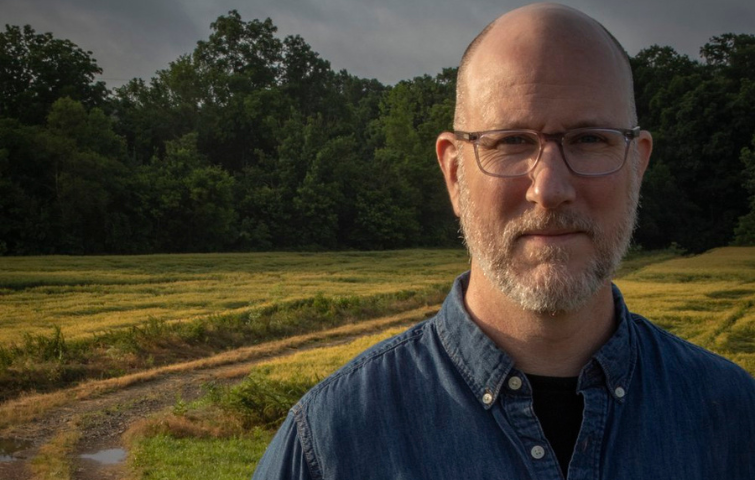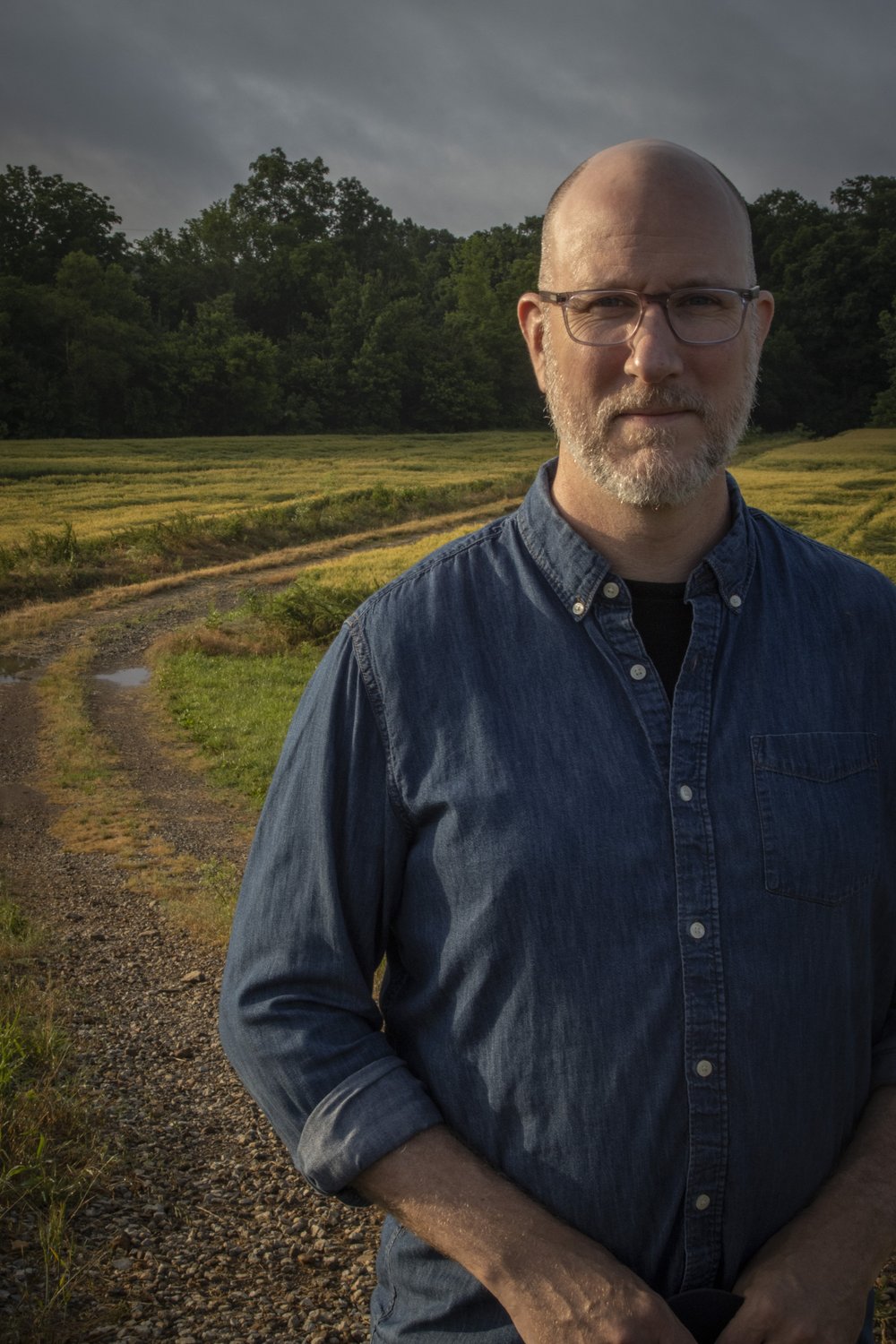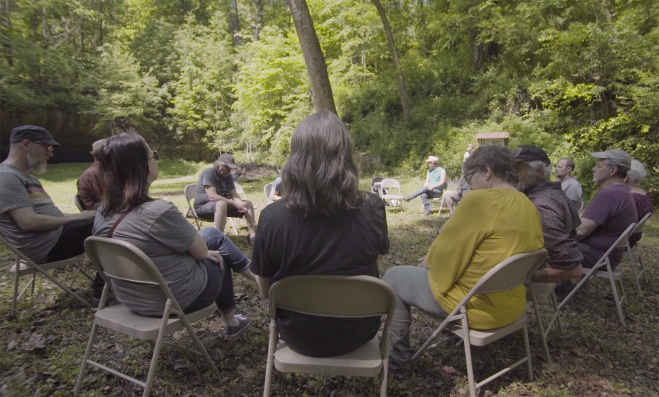Brian Harnetty Taps Into the Sounds of History and Nature

 By Melissa Starker, Creative Content & PR Manager, Wexner Center for the Arts
By Melissa Starker, Creative Content & PR Manager, Wexner Center for the Arts
Brian Harnetty is a composer and interdisciplinary artist who, in projects such as Shawnee, Ohio and last year’s Words and Silences, combines new music with archival and field recordings. A past Wexner Center Artist Residency Award recipient, Harnetty will return to the Wex in March and April to lead K-12 students through a sound and social practice program he began in 2018, Forest Listening Rooms. Harnetty recently shared what he loves about his work and what you’ll hear from him next.
Melissa: What appeals to you about creating new opportunities to listen to voices or compositions from the past?
Brian: Well, part of it is, I’m in love with the medium. My dad was a typewriter repairman and then he repaired radios, so I grew up listening to sound through old machines. I was always enamored with the hiss and hum and crackle, and they also seem like time machines to me. I could listen to a 78 and hear it the same way someone heard it 100 years ago. The other part is loving music and sound, but also all the context around it. A field recording [captures] that really well. You’ll hear someone coughing or nervous beforehand, or the floor creaking, or a door opening, or laughter. All these things, they’re my little bits of gold to use for material.
Melissa: In the Forest Listening Rooms program, you combine outdoor walks with listening exercises to deepen connections with the world around us. How did you start exploring sounds in nature?
Brian: In 2010, I went back to school for my Ph.D. in interdisciplinary arts with a focus on sound studies. Part of that was being trained as an ethnographer. Ethnography is basically deeply hanging out with a group of people over a long period of time. I was very much interested in specific places and the people who live there, and I chose the town of Shawnee in Appalachian Ohio to hang out in. This is where my mom’s family grew up and lived for several generations, first as coal miners. It’s located within Wayne National Forest and the forest itself became a huge part of the whole project, of trying to understand as much as you can about a place through sound.
Melissa: You’re a Global Arts + Humanities Discovery Theme (GAHDT) Fellow at Ohio State this year. What’s that been like?
Brian: The theme this year is “Archival Imaginations.” I have really enjoyed listening to and sharing with this faculty cohort of people working across many different disciplines on archives. It’s been wonderful for that alone. I also like that GAHDT seems to be breaking down silos at the university.
Melissa: Words and Silences is a beautiful work. Are you working on anything new?
Brian: Yeah, there’s always something lurking. This year, as part of GAHDT, writing has been a big piece for my work. I’m doing two books. One is a small field guide around how to experience Forest Listing Rooms in Appalachian Ohio, but also how to make your own version no matter where you are. The second one is around my own practice.
 Then I have a couple of local commissions for ensembles here, both through the Johnstone Fund for New Music. One is based on my dad’s workbench that I inherited and all its amazing tools and junk. I’m trying to make a live performance and a sound installation that explores the idea, when you inherit objects from someone that they loved, can you listen to those objects deeply? Can you find meaning in them? So, it’s kind of a portrait of my dad.
Then I have a couple of local commissions for ensembles here, both through the Johnstone Fund for New Music. One is based on my dad’s workbench that I inherited and all its amazing tools and junk. I’m trying to make a live performance and a sound installation that explores the idea, when you inherit objects from someone that they loved, can you listen to those objects deeply? Can you find meaning in them? So, it’s kind of a portrait of my dad.
Melissa: Is there anything you’re listening to and liking these days?
Brian: I’ve been listening to my friend’s music. Her name is Dao Strom. She’s a poet and musician and I have really been enjoying her interdisciplinary work. And I also was listening to an OSU archive called the Borror Lab of Bioacoustics. It’s basically all kinds of bird sounds. I’ve been dreaming about trying to do something with it as a project down the line.
Melissa: What do you like about the Columbus art scene right now?
Brian: A lot of my most recent fun times in Columbus have been around Secret Studio in Franklinton, with Keith Hanlon and Amy Turn Sharp. I mean, it’s pretty great. I feel very comfortable there. Keith helps me all the time with musical problems and recording stuff. Also, they have art shows and poetry there. And it’s like a block away from Wild Goose and The Vanderelli Room.
For more information about educational and public programs at the Wexner Center for the Arts, go to wexarts.org/education.
This article is part of a bi-weekly column brought to you by the Greater Columbus Arts Council as part of the Art Makes Columbus campaign. Explore a calendar of events, public art database and artist stories at columbusmakesart.com. The Wexner Center for the Arts is funded in part by a GCAC Operating Support grant. To learn more about GCAC grants visit gcac.org.

